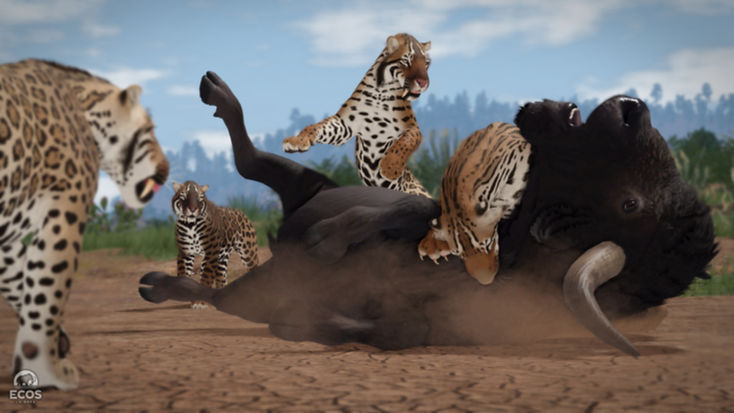
WHY DID WE CHOOSE
THE LA BREA TAR PITS
The La Brea Tar Pits, once a death trap, now a trove of prehistoric treasures.
The La Brea Tar Pits in Los Angeles, California, are home to one of the most stunningly preserved ecosystems of the last ice age, making them an ideal location for our game. Our team specifically selected a well-known and extensively studied fossil site for the ease of our own research and accessibility to literature. With over a hundred years of research behind the La Brea Tar Pits, we can be confident in the accuracy of our depiction.
The La Brea Tar Pits record a time span encompassing the latter half of the aptly named Rancholabrean Age, 50,000 to 11,000 years before the present. The recency of La Brea's ecosystem is relevant to us, as the overlap of extinct and living species appeals to the specialties and interests of our team. The intersection of prehistoric and modern animals that audiences are familiar with gives context to the great diversity that was once the baseline for Earth's ecosystems before humans. The evidence of large and iconic prehistoric creatures at La Brea makes this a perfect setting to display the full spectrum of North America's once-abundant megafaunal diversity.
The La Brea Tar Pits ecosystem boasts an impressive assortment of mammals of all sizes, rivaling the biodiversity of the modern African Serengeti ecosystem. This is in part due to the more temperate climate of the last ice age which allowed for animals from different biogeographic realms to coexist. Neotropical animals like sloths & tapirs could be found grazing alongside arctic animals such as horses & mammoths.

Illustration by @themongoosedude (Instagram.com/themongoosedude)
% Large Mammal Population in North America

100
0
H. sapiens enter continent
^
% survival of species
Log (time) kYA
Martin P. S. (1989). Prehistoric overkill: A global model. In Quaternary extinctions: A prehistoric revolution (ed. P.S. Martin and R.G. Klein). Tucson, AZ: Univ. Arizona Press. pp. 354–404.
Ecos: La Brea is set approximately 25,000 years ago, during the height of the Last Glacial Maximum (LGM). This was a time when North American ecosystems were highly productive, preceding the climate fluctuations and extinctions that would soon follow at the end of the Pleistocene Epoch.
Around this time, humanity was only beginning to pioneer the continent in an event known as the "Peopling of the Americas." There is no definitive date for this migration, as accumulating evidence has continually pushed back the timeline for the earliest presence of humans in North America. Currently, the earliest evidence is dated to ~20,000 years ago.
These early pioneers had yet to develop into the widespread megafauna-hunting cultures, such as Clovis, which emerged ~13,000 years ago. While not the sole factor in the extinction of large mammals, the spread of humans coincides with the disappearance of many megafaunal species across the continent.
Archaeological sites like the "White Sands footprints" in New Mexico provide evidence of humans coexisting with iconic Ice Age megafauna such as mammoths ~20,000 years ago. Other sites, such as Rimrock Draw, Oregon, provide evidence of humans butchering a Camelops they likely hunted.
Despite these adjacent human sites, no direct traces of humans have been found at the La Brea Tar Pits. Whether this indicates an absence of humans in the region or their careful avoidance of the asphalt seeps remains uncertain. It is worth noting that the skull of a woman buried at the site post-dates the megafaunal remains. Therefore, we cannot confidently say that humans coexisted with megafauna at La Brea.

Unused concept art exploring how early Paleoamericans may have looked in Ecos: La Brea, inspired by the Clovis & Indigenous cultures of Southern California. Artwork by @JayMD.
